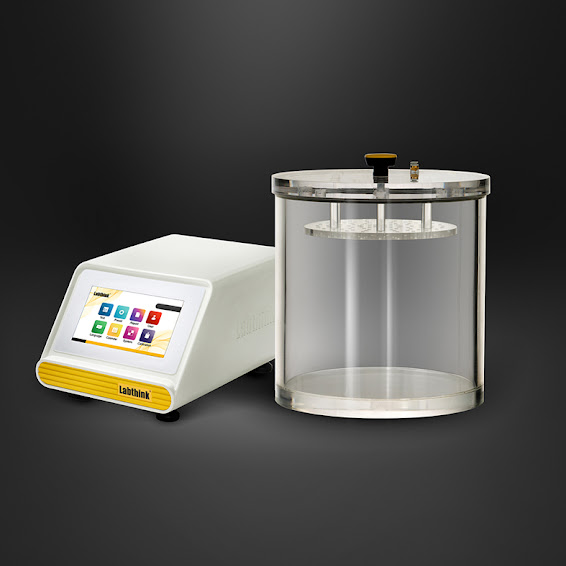Maintaining chocolate quality throughout its shelf life is crucial. Inappropriate packaging can accelerate spoilage through frosting, deterioration, and insect infestation. This article explores three standardized test methods used to assess the effectiveness of chocolate packaging in preserving product integrity.
A low OTR is crucial for brownie packaging, as it minimizes oxygen-induced rancidity of nuts within the chocolate.
Oxygen Transmission Rate (OTR) Test (ASTM D3985) employs Labthink C203 Oxygen Transmission Rate Test System. The instrument separates a test chamber into two sections. Oxygen flows into one side, while an inert carrier gas (nitrogen) flows in the other. The film sample separates these chambers. Any oxygen permeating the film reacts with a coulometric sensor on the nitrogen side, generating a voltage proportional to the oxygen content. This voltage is then used to calculate the OTR, indicating the film's resistance to oxygen ingress.
A low WVTR is essential for all chocolates, as it prevents moisture ingress that can lead to frosting and deterioration. This test is particularly important for chocolates destined for high-humidity regions.
Water Vapor Transmission Rate (WVTR) Test (ISO 15106-3) utilizes Labthink C303 Water Vapor Transmission Rate Test System. The sample is placed in a chamber with controlled humidity on one side and dry nitrogen on the other. Water vapor migrates through the sample due to the humidity difference. The dry nitrogen carries the permeated vapor to a sensor, and the resulting signal is used to calculate the WVTR.
A strong seal prevents insect infestation, a major concern for chocolate quality. Seal Performance Test (ASTM D3078) employs Labthink C660B Leak Tester and utilizes the bubble emission method. The tester pressurizes a sealed package sample with a controlled negative pressure. If a leak exists, air from the environment will be drawn into the package through the leak, forming bubbles detectable by the instrument. The pressure at which leakage occurs indicates the seal's integrity.
These standardized test methods, coupled with their respective instruments, offer chocolate manufacturers a reliable means to evaluate packaging performance. By incorporating these tests into their quality control procedures, manufacturers can select packaging materials that effectively protect their products throughout the supply chain, ensuring consumer satisfaction and brand reputation.
A low OTR is crucial for brownie packaging, as it minimizes oxygen-induced rancidity of nuts within the chocolate.
Oxygen Transmission Rate (OTR) Test (ASTM D3985) employs Labthink C203 Oxygen Transmission Rate Test System. The instrument separates a test chamber into two sections. Oxygen flows into one side, while an inert carrier gas (nitrogen) flows in the other. The film sample separates these chambers. Any oxygen permeating the film reacts with a coulometric sensor on the nitrogen side, generating a voltage proportional to the oxygen content. This voltage is then used to calculate the OTR, indicating the film's resistance to oxygen ingress.
A low WVTR is essential for all chocolates, as it prevents moisture ingress that can lead to frosting and deterioration. This test is particularly important for chocolates destined for high-humidity regions.
Water Vapor Transmission Rate (WVTR) Test (ISO 15106-3) utilizes Labthink C303 Water Vapor Transmission Rate Test System. The sample is placed in a chamber with controlled humidity on one side and dry nitrogen on the other. Water vapor migrates through the sample due to the humidity difference. The dry nitrogen carries the permeated vapor to a sensor, and the resulting signal is used to calculate the WVTR.
A strong seal prevents insect infestation, a major concern for chocolate quality. Seal Performance Test (ASTM D3078) employs Labthink C660B Leak Tester and utilizes the bubble emission method. The tester pressurizes a sealed package sample with a controlled negative pressure. If a leak exists, air from the environment will be drawn into the package through the leak, forming bubbles detectable by the instrument. The pressure at which leakage occurs indicates the seal's integrity.
These standardized test methods, coupled with their respective instruments, offer chocolate manufacturers a reliable means to evaluate packaging performance. By incorporating these tests into their quality control procedures, manufacturers can select packaging materials that effectively protect their products throughout the supply chain, ensuring consumer satisfaction and brand reputation.



Comments
Post a Comment